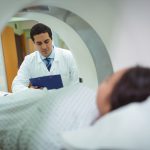Why you must deploy UPSs — STAT! — in the lab/hospital environment
In the business world, just a few seconds of downtime can cost organizations hundreds of thousands of dollars. But consider this: in the medical sector, the briefest disturbance in power can also cost lives. Even if the stakes aren’t life and death, power quality issues are a bitter pill to swallow for today’s health care providers. From disruption of patient care to data loss and equipment damage, power anomalies are responsible for inducing significant pain across the industry, where technology now drives the practice of medicine.
Uninterruptible power systems (UPSs) are essential to maintaining continuous power in critical spaces such as operating rooms and intensive care units, where the consequences of power failures are potentially deadly. But it is also imperative to include UPS protection in areas such as labs, imaging rooms and surgical suites where power anomalies can also take a devastating toll.
No longer a luxury but a necessity, UPS solutions help health care entities to:
• Ensure the safety and comfort of patients — From electronic medical records to sophisticated diagnostic imaging, technology has essentially revolutionized the landscape of patient health care. Yet growing threats to power quality — such as grid overdemand, aging infrastructure, severe weather events and even regularly mandated generator checks — make access to continuous, reliable power an ongoing challenge. An uninterruptible power supply is the perfect Rx, enabling hospitals and labs to provide exceptional patient care, protect hygienic environments for patient and staff safety, as well as securely perform tests and procedures even when utility power is questionable.
• Protect and optimize equipment — Health care organizations are allocating an increasing amount of capital for cutting-edge medical technology, and consistent power is essential to protect that investment. UPSs safeguard this sophisticated diagnostic and imaging equipment against power anomalies, downtime, repairs and early replacement. In addition, manufacturers of sensitive electronic medical equipment generally specify that certain power requirements be met, such as eliminating electrical line noise and maintaining voltage within + 10% (devices that gather images tend to have even tighter voltage specifications of +2%). Some devices have additional requirements, such as leakage current minimums for patient-connected equipment. With UPS protection, medical personnel are able to maintain compliance with regulations, as well as safely and accurately share quality imaging and diagnostic information, and manage equipment performance, all while ensuring workflow flexibility.
• Keep data available — Health care facilities normally require continuous uptime in order to securely manage data and ensure the availability of critical services. UPSs are instrumental to keeping electronic medical records and other data accessible at all times, as well as helping facilities adhere to HIPAA privacy and security requirements.
Special consideration must be given to ensure that CT and MRI machines maintain a clean bill of health amid changing power conditions. In our next blog, we will focus on the importance of UPS protection specifically for these devices.
In the meantime, contact IPS if you’re ready to protect your equipment, data, and the well-being of your patients with clean, consistent power.





